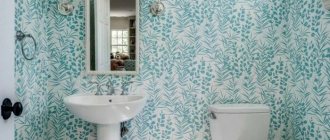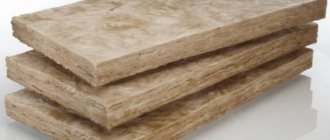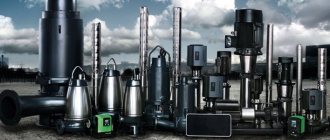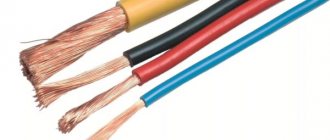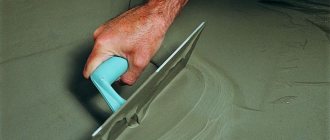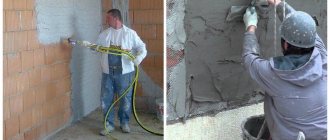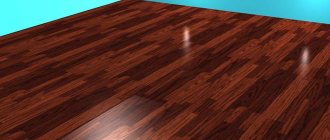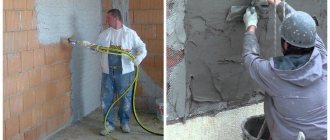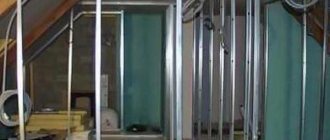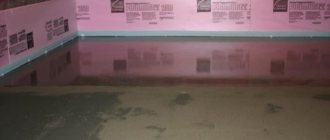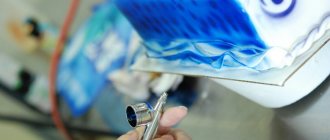Wood bleaches Neomid-500 and Sagus Profi
Over time, the wood often begins to darken: first, blue spots appear, then large black stains, on which mold actively multiplies. Bleach will help cope with this problem.
The best of them are Neomid-500 and Sagus Profi
NEOMID 500 is a bleaching and cleaning agent that destroys fungi, plaque and restores the natural color of wood. The product is produced by the Russian company EXPERTECOLOGY-NEOHIM. The product meets international chemical production standards.
Neomid-500 is used for preventive purposes or to lighten wood that has signs of fungal damage. It is applied not only to the darkened area, but to the entire surface to completely destroy the spores.
If the log is already affected, a concentrate and a substance diluted with water 1:1 will do. You can update the color with a 1:2 solution. The substance is applied in a thin, uniform layer. You must follow safety requirements: wear goggles and gloves. Contact of the substance with skin is unacceptable. After impregnation, the wood dries within 24 hours. The room must be ventilated. Permissible temperature – up to 20 °C.
Advantages of Neomid-500 bleach:
- the product returns the wood to its natural color 12 hours after use;
- a single preventive treatment protects the building from harmful microorganisms for 20 years;
- low consumption: approximately 150 g/m2.
YouTube video about Neomid-500:
Sagus Profi – bleach for wooden log houses
It acts in a similar way: it lightens the wood and removes the effects of moisture, mold and bioorganisms. It is acceptable to use it for processing concrete, tiles, stone and other materials that have been subjected to biodestruction. Sagus Profi has a chlorine base and a slight chlorine smell. In appearance it is a transparent liquid with a slight yellowish tint. It does not need to be diluted or washed off. Sagus is applied to a dry, unpainted surface. It is recommended to use a brush with hard synthetic bristles as a tool. Sometimes a repeat procedure is necessary. Consumption – 110-170 g/m2.
Advantages of Sagus Profi bleach:
- it is permissible to use it at negative temperatures;
- quick drying (the drying speed is affected by temperature and air humidity: at +20°C the product will dry in 2 hours);
- This is one of the few bleaches that can be used outdoors in winter.
Both bleaches are effective. Neomid-500 is more delicate and is suitable for the prevention and “refreshing” of wood. Sagus Pro is more intense, it will remove deep lesions faster.
Video on YouTube about Sagus Profi wood bleach with reviews and expert recommendations:
Expert woodworker: Kuznetsov Sergey Petrovich
Traditional methods
Despite the availability of a wide range of professional compounds, many people try to save money and use home remedies as a full-fledged wood bleach. In the photo you can see that the result is not always good, and often the material turns out to be completely damaged and is also unevenly bleached. And yet, for unimportant surfaces, you can use folk remedies, which should first be tested in inconspicuous areas.
Chlorine bleach products
Before applying chlorine or, together with the main step, treat the base with soda ash or even potassium carbonate. This helps remove resinous substances and begin preparing the material for further processing.
The order of work is as follows:
- Pour 5 liters of water into a container.
- Dilute 1 kg of bleach in water, as well as 0.125 kg of soda (ash).
- Stir and leave everything to settle.
- Drain the solution and apply it to the wood.
- After 5 minutes, wipe the surface with 9% vinegar.
Usually the wood becomes lighter after 15 minutes, but for very dark material the treatment should be done twice. It is better to place products in the most neglected state in the solution for half an hour, and before painting the wood should be washed with soapy water.
Whitening with hydrogen peroxide
The simplest pharmaceutical hydrogen peroxide is not suitable for treating wood, and a concentrated solution is required - perhydrol. In its pure form, it should be applied to the products with a dishwashing sponge, and after 20 minutes, carry out a neutralization reaction with 4% vinegar. Pre-moisten the base with water, and then apply a 10% ammonia solution. Do not use this method on oak surfaces because they may turn green. Peroxide is ideal for birch, beech and walnut.
Lightening wood with oxalic acid
This acid is perfect for lightening maple, poplar, linden and birch. You should take 5 ml of acid, dilute everything in 100 ml of water, and then apply it to the wood surface. If you need faster and more powerful whitening, then prepare a solution of equal parts of sulfuric and oxalic acid, and then add sodium peroxide (you need 2.5 mg per 5 ml of both acids). When you get the desired color, you need to neutralize it. To do this, dilute 15 grams of chlorine-type lime and 3 grams of soda ash in 100 ml of water. First, add soda to hot water, and after cooling, add lime. Apply everything to the surface of the wood, and after an hour, rinse with clean water.
Wood bleach "Bioshield-2"
"Bioshield-2" is a highly effective modern product that allows you to return wood to its original appearance. Unlike ammonia-based solutions, which only work on non-porous surfaces, this bleach is able to penetrate deep into the wood. At the same time, it not only washes away the visible presence of fungus and mold, but also destroys their forms in pores and cracks, and also creates a barrier that prevents re-infection. The light yellow solution is packaged in canisters of 10 and 20 liters, which corresponds to 12 and 24 kilograms.
Its main function is to whiten old wooden elements and structures. The main component of the product is chlorine. This bleach is suitable for use by both specialists on a production scale and amateurs when decorating their home.
Video on wood bleaching of old wooden boxes and wooden pallets:
Features of application
Bleaching work should be carried out in a well-ventilated area or outdoors. To apply the product to the surface to be treated, use a hard brush, then wait a couple of hours until it dries completely and repeat the procedure. Approximately 75 g of bleach is consumed per 1 square meter of wood surface. In cases of excessive fungal and rot damage, this figure can be significantly higher - up to 300 g. At temperatures from +10 to +30°C, the solution dries completely in 1-2 hours.
Photo: Bioshield-2 is widely used for bleaching wooden pallets and wooden boxes.
The Bioshield-2 product can be used at any time of the year, regardless of the characteristics of the climatic zone. However, it is worth taking into account that if the thermometer shows below -20°C, then the drying time of the surface increases significantly. Therefore, if there is a need to apply a second layer of bleach, you should wait several hours, and only after making sure that the first one has completely dried should you begin the procedure again.
When working with a product containing chlorine, you must wear special clothing. In case of unexpected contact of the solution with the skin and mucous membranes, immediately wash off the bleach with plain water.
Advantages of using Bioshield-2 bleach:
- high efficiency even when treating deep damage;
- versatility (suitable for removing moss, fungus and all types of mold on wooden surfaces, as well as on any other building materials: concrete, tiles, stone and brick);
- wide range of applications (both in construction and restoration work); does not lose its properties at low temperatures;
- has a long shelf life;
- does not burn;
- does not require preliminary preparation (for example, breeding); affordable.
Video on YouTube about bleach with recommendations and reviews of the Bioshield-2 composition:
Expert house builder: Zelentsov Yuri Nikolaevich
Whitening instructions
Pre-clean the wood, it is necessary to remove all contaminants, if possible, then a smooth surface is created. Sand warps to get better impregnation.
If there is glass or aluminum nearby, they need to be covered so that the bleach does not destroy them.
The prepared solution is applied according to the manufacturer's recommendations. They also look at the time when it will be possible to wash off the remaining solution. When washing, they move from top to bottom, spraying water from a hose is suitable. For moldy areas, it is better to clean with a metal brush or spatula.
Pre-clean the wood, it is necessary to remove all contaminants, if possible, then a smooth surface is created.
A proven way to remove mold and mildew from walls
Very often there is a situation when you notice a fungus in your apartment or house, what to do, what means to use to completely eliminate it. We know what negative impact it has on health, its spores can even be in the air, and allergies certainly cannot be avoided.
It chooses cold places in the house, can appear under the eaves and progresses from autumn to spring. You need to ensure that there is no temperature difference in the house. When condensation appears on the windows, fungus will certainly appear, do not allow fumes in the house, the window should always be open or you can use the hood.
To eliminate it, we will use Bioshield-2 diluted with water in a ratio of 1:5
We work strictly with gloves and a mask, as the smell is very strong. But the effectiveness is much better and faster compared to other means, and it does not corrode water-based paint.
In about five minutes you will notice that the fungus will disappear quickly, know that as soon as you again create an environment favorable for its reproduction, it will appear again in six months. If you notice a dry fungus, then in a warm place it sleeps until a certain moment, but dampness and a temperature change appear, and it again begins its destructive work. Therefore, if you have a wooden house or bathhouse, then after treating the wood with Bioshield-2 bleach, we recommend additionally treating the surfaces with the antiseptic-preservative Neomid-400 indoors and the antiseptic-preservative Neomid 440 eco outside of wooden structures and structures.
Don’t forget to ventilate the room when you are sure that the fungus has completely disappeared, which means you don’t have to worry about your health. And also do not forget about the root cause of the fungus, you must eliminate it.
Expert builder of log cabins: Yudin Vladimir Yurievich.
Can I use home remedies?
Products such as bleach, acetic acid and hydrogen peroxide are found in every home, so the temptation to use them instead of special expensive compounds is very great. But you shouldn’t do this, even though they work well. Not only can they leave streaks or change the color of the wood unpredictably, but they also act at a slower speed and require repeated application. And a long period of exposure without rinsing is fraught with the risk that the alkaline salts will penetrate too deeply, will not be washed out and will remain inside, having a destructive effect on the wood.
How to notice the emergence of negative processes
Each type of wood has a characteristic shade, which the affected layer of material receives as a result of negative influence.
It is these signs that you need to focus on when conducting an inspection:
- The oak takes on a golden hue;
- Birch is covered with bluish spots;
- Pine and other conifers get a clear blue or even black surface;
- Dark ash lightens several tones;
- The walnut acquires a bright red color.
It all starts with the invisible appearance and spread of microorganisms. They first occupy small areas and spots appear with a characteristic color change.
Gradually, the dots grow, merging together, and a clear change in shade occurs. If the affected surface is not treated in time, the deterioration process will worsen. In the future, it will not always be possible to cure blackened wood using simple treatment. Therefore, it is advisable to carry out the whitening process as quickly as possible.
When does the material change color?
You can notice a change in the natural color of the wood at any time. It doesn’t matter how fresh the material is, whether it’s been used in production or whether it’s just waiting for its turn.
Lumber may change its natural color and become covered with blue or black spots. Any wood is subject to such damage, regardless of its species, value, or natural strength.
There may be several reasons for the color change:
- Errors during transportation;
- Excessive exposure to light;
- Violation of storage conditions.
To eliminate the negative impact, you need to do more than just locally remove the stain. It is important to properly treat all lumber that has changed color. Otherwise, the blackness will remain in the deeper layers of the wood, and the problem will quickly return.
What can you use to whiten it?
For bleaching, you can use industrial products, or you can get by with a solution prepared at home.
Folk remedies
To whiten blackened surfaces and renew their appearance, you can use lime milk. This is the most popular option and is suitable for those who are working with wood for the first time.
To prepare it, 10 g of baking soda are mixed with 80 g of bleach. All this is filled with water. You need to take 350 ml of warm water. The resulting whitening product should sit well. To do this, it must be sent to a dark place for two days. After this, it should be used immediately, because if it sits a little longer, it will lose its effectiveness.
Prevention
Knowing the reasons for darkening, making white wood as durable as possible and preventing discoloration is not too difficult.
Antiseptic treatment
It will prevent the development of mold fungi in the wood.
Antiseptic composition with fire retardant additives.
What are antiseptics?
- Water soluble. This type of primer will provide a lasting effect either indoors or if a water-repellent protective layer (varnish, oil-wax impregnation, paint, etc.) is applied to the surface of the wood.
- Oil based. The composition performs two functions at once: it kills mold spores and protects the wood from moisture.
- Solvent based. The soil provides maximum penetration depth and effective wood preservation; however, it usually significantly reduces the air and vapor permeability of walls.
Hydrophobization
The list of protective coatings for wooden bases is a topic for a separate study. Briefly, they can be divided into oil-wax compositions, which allow the wood to remain permeable to air, and various varnishes: polyurethane, alkyd, acrylic, etc.
The main function of the compositions is to reliably prevent fluctuations in wood moisture content, preserving it at the lowest possible level.
UV filter
UV protection is an optional quality of protective varnishes and impregnations for painting wood. Special additives make the surface layer impenetrable to the shortest waves of the solar spectrum. Here, alas, you will have to completely trust the manufacturer: it is impossible to check the quality of ultraviolet protection with your own hands at the purchase stage.
The presence of UV protection is usually mentioned on the packaging.

